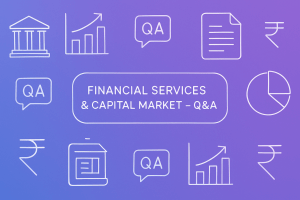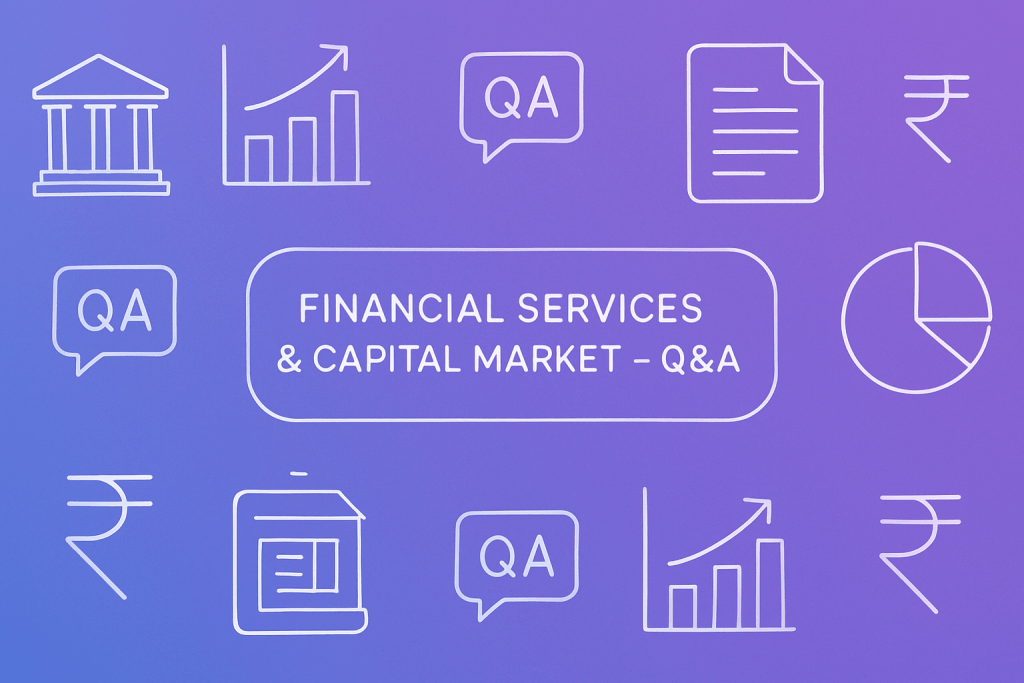SPOM Set C Paper-1 : Risk Management MCQ is designed as an essential resource to help you solidify your grasp on the core concepts of Risk Management. Drawing directly from the ICAI’s curriculum, we’ve prepared a comprehensive set of 50 Multiple Choice Questions (MCQs). These questions are meticulously crafted to test your understanding of key topics, including:
- The foundational distinction between ‘Risk’ and ‘Uncertainty’
- Various classifications and types of risks (Strategic, Operational, Financial, etc.)
- The overarching importance and objectives of effective risk management
- An overview of mitigation and control strategies
- The significant opportunities for CAs in the realm of risk management
- Insights into Enterprise Risk Management (ERM) frameworks like COSO and ISO 31000.
Engage with these MCQs to assess your preparation, identify areas for improvement, and build the confidence needed to excel in your examination. Each question offers immediate feedback, helping you learn from your selections and deepen your knowledge.
Paper-1 : Risk Management
1. According to Professor Frank Knight, what is the primary distinction between “risk” and “uncertainty”?
2. Which of the following is considered an “internal risk” based on its source?
3. What does “Residual Risk” refer to in risk classification?
4. Which of the following is an example of a Strategic Risk?
5. What is the primary objective of Risk Management?
6. The concept of “Risk Control” primarily focuses on:
7. Which of the following is NOT explicitly mentioned as a role a Chartered Accountant can play in Risk Management?
8. In the context of risk classification based on consequences, “Operational Risks” are generally:
9. What is the main characteristic of “Uncontrollable Risks”?
10. The relationship between the source and nature of risk indicates that risk is highest for:
11. What is “Enterprise Risk”?
12. Which of the following is a component of the latest COSO Enterprise Risk Management Framework?
13. The main difference between Scenario Analysis and Sensitivity Analysis is that:
14. What does a “well-defined and developed risk appetite statement” primarily help achieve?
15. “Knowledge Risks” are primarily associated with:
16. Which of the following is an example of a “Controllable Risk”?
17. “Audit Risk” is primarily defined as:
18. The “Transfer” strategy in risk management involves:
19. Which of the following is considered an “External Risk” based on its source?
20. What is the definition of “Risk” as a measure of inability to achieve overall programme objectives?
21. According to the document, which industry was mentioned as using full-time economists to monitor and track changing economic scenarios?
22. What is the core idea behind “Hedging” as a risk management technique?
23. Which risk classification categorizes risks based on whether or not any risk treatment or mitigatory actions have been applied?
24. “Brand/Reputation Risks” generally emanate from:
25. What role does the CEO primarily play in the Risk Management agenda?
26. Which of the following is NOT an example of a “People factor” internal risk?
27. What is a key benefit of a well-defined Risk Appetite Statement regarding transparency?
28. The statement “risk is a state of nature, uncertainty is a state of human mind” implies:
29. What is the primary focus of “Risk Assessment” in the risk management process?
30. The “Avoidance” strategy in risk management means:
31. “Financial Risks” include:
32. The process of “Risk Identification” can be successfully executed if:
33. What is the role of “Key Success Factors (CSFs)” in strategic risk?
34. “Business Risk” as a component of unsystematic risk emanates from:
35. What is the main characteristic of “Operational Risk” in the financial services industry?
36. The case of Kodak mentioned in the document is an example of failing to manage which type of risk?
37. “Physical factors” leading to internal risks can include:
38. What is the distinction between “Risk” and “Uncertainty” as per the document?
39. Which of the following defines “Risk Management” according to ISO 31000 Guide 73:2009?
40. “Customer Satisfaction Risks” are typically:
41. The objective of a Disaster Recovery Plan (DRP) is to:
42. “Technology Risks” include risks emanating from:
43. Which of the following is an example of “Laws and Regulations (Compliance) Risks”?
44. “Management and Employees (HR/People) Risks” include:
45. What does the concept of “sustainable growth” help managers consider?
46. “Fraud Risk” as described by Standard on Internal Audit (SIA) 11, involves:
47. “Location/Geography Risks” are those specific to:
48. What is the definition of “Systematic Risk” in the context of business portfolio risks?
49. The concept of “Enterprise Governance” is described as:
50. “Continuous Improvement” in risk management involves:







Can you please share all the chapters McQ for risk management set c spom